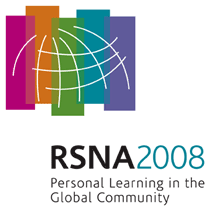
Abstract Archives of the RSNA, 2008
David C. Levin MD, Presenter: Consultant, HealthHelp
Board of Directors, Outpatient Imaging Affiliates, LLC
Vijay Madan Rao MD, Abstract Co-Author: Nothing to Disclose
Laurence Parker PhD, Abstract Co-Author: Nothing to Disclose
Andrea J. Frangos MS, Abstract Co-Author: Nothing to Disclose
Jonathan H. Sunshine PhD, Abstract Co-Author: Nothing to Disclose
To study utilization trends in treatment of noncardiac, noncerebral peripheral arterial disease (PAD), comparing percutaneous and surgical approaches. Also, to determine which specialists are performing the percutaneous procedures.
The Medicare Part B databases for 1996 through 2006 were used. The CPT-4 procedure codes selected for study were the 8 codes for percutaneous transluminal angioplasty and stent placement (PTA/S) and the 36 codes for bypass surgery of peripheral arteries. Venous procedures were excluded. Utilization rates per 100,000 Medicare beneficiaries were calculated and trends in these rates were tracked over the decade. Medicare’s physician specialty codes were used to identify the providers as radiologists, surgeons, cardiologists, or other physicians.
Between 1996 and 2006, the overall utilization rate per 100,000 of PTA/S by all physicians increased from 240 to 751 (+213%). The increases by specialty were: radiologists 151 to 187 (+24%); cardiologists 55 to 272 (+395%); surgeons 21 to 251 (+1095%); other physicians 13 to 41 (+215%). During the same period, the overall utilization rate of bypass surgery declined from 321 to 170 (-47%).
Between 1996 to 2006, the use of bypass surgery for PAD declined, while the use of PTA/S increased. There was a modest increase in the utilization rate of PTA/S for PAD among radiologists, but very large increases among cardiologists and surgeons. Whereas in 1996, radiologists had performed far more PTA/S than either of the latter 2, by 2006 both cardiologists and surgeons performed considerably more of these procedures than radiologists. Since there is rarely any justification for treating cases of PAD before they become symptomatic, the very rapid growth of PTA/S among cardiologists and surgeons raises concern about unnecessary utilization related to self-referral. Although some apprehension has been expressed about a reduced role for interventional radiologists in the treatment of PAD, these data show that their utilization has actually increased in recent years.
Does not apply.
Levin, D,
Rao, V,
Parker, L,
Frangos, A,
Sunshine, J,
Recent Utilization Trends and Practice Patterns in Treatment of Peripheral Arterial Disease: The Roles of Radiologists, Surgeons, and Cardiologists. Radiological Society of North America 2008 Scientific Assembly and Annual Meeting, February 18 - February 20, 2008 ,Chicago IL.
http://archive.rsna.org/2008/6008594.html

